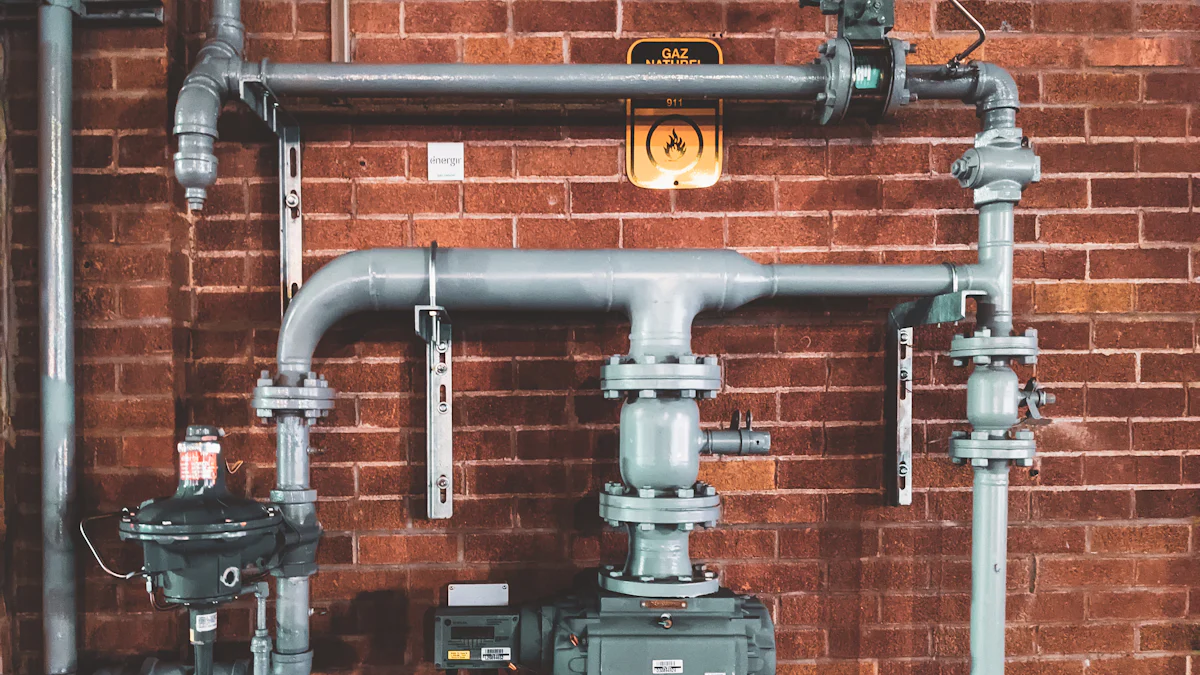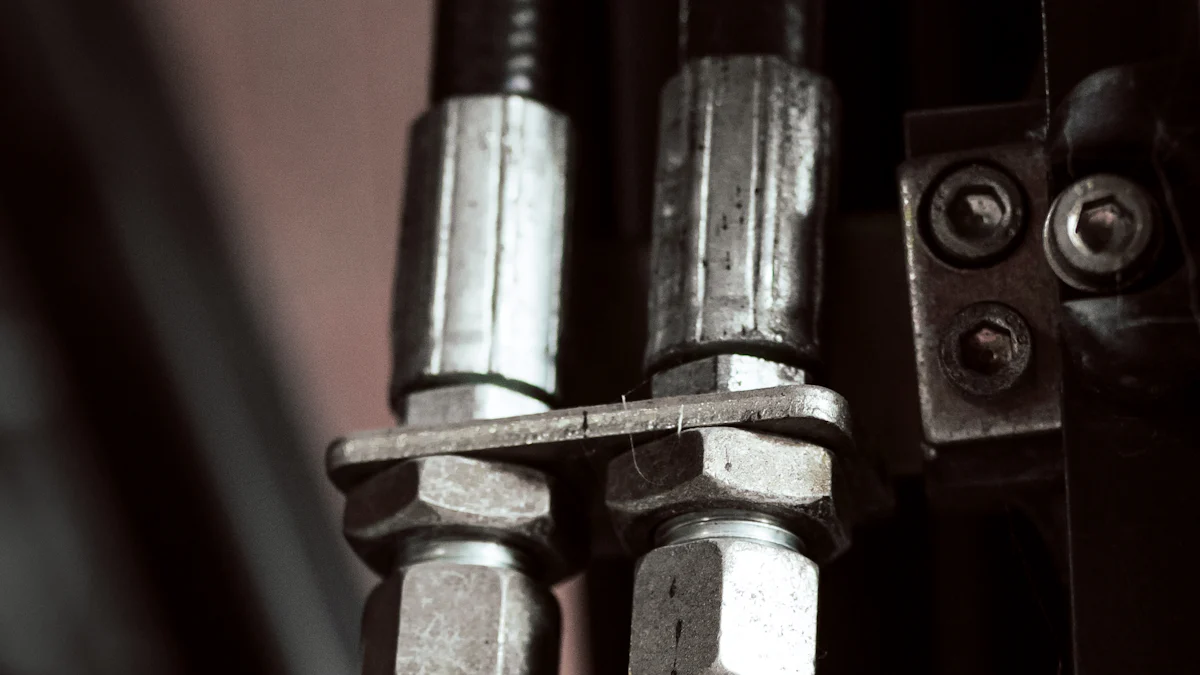Understanding the Basics of Parker Interchange Fittings
Parker interchange fittings are designed to be compatible with a wide range of hydraulic systems, offering interchange options that provide flexibility and convenience. These fittings allow users to interchange hose ends and tube fittings, ensuring seamless compatibility with various components. The ability to interchange fittings not only saves costs but also offers a diverse selection of options that may not be available with other manufacturers such as Parker 43 Series.
One key aspect of interchange fittings is their adaptability to different applications without compromising on performance. For instance, Parker’s new TS1000 tube fitting and adapter plating have demonstrated exceptional durability, lasting 13 times longer in salt spray tests than required by SAE standards while maintaining the same cost. This level of durability ensures that the interchange fittings can withstand harsh environmental conditions, making them suitable for a wide range of industrial applications.
The importance of compatibility and flexibility cannot be overstated when it comes to hydraulic systems. Tube fittings designed for use with stainless steel and other metal tubing face unique challenges due to the nature of these materials. Stainless steel is known for its hardness, making it difficult to achieve the desired tube grip and seal functions. However, Parker’s single ferrule stainless steel tube fittings have been engineered to address these challenges effectively.
In addition, push-in type fittings featuring resilient fingers for gripping tubing have been developed by various manufacturers including Parker-Hannifin Corp., Nycoil, and Pisco Products. These innovative designs offer enhanced functionality and ease of use in hydraulic systems.
Key Features of Parker Interchange Fittings

Parker offers a diverse range of interchange fittings, each designed to meet specific hydraulic system requirements. Understanding the key features of these fittings is crucial for selecting the right components and ensuring optimal performance.
Parker Interchange 43 Series Style Fittings
The Parker Interchange 43 Series Style Fittings are engineered to provide reliable connections in high-pressure applications. These fittings feature a robust design that ensures leak-free performance, making them suitable for demanding hydraulic systems. With a focus on durability and precision engineering, the 43 Series Style Fittings offer compatibility with various tubing materials, including stainless steel and other metals.
Parker Interchange 71 Series Style Fittings
The Parker Interchange 71 Series Style Fittings are known for their versatility and adaptability in hydraulic systems. These fittings are designed to withstand extreme conditions while maintaining consistent performance. The 71 Series Style Fittings offer a wide range of configurations, including JIC hydraulic fittings, male hose fittings, and JIC female hose fittings, providing users with flexibility in designing and implementing their hydraulic systems.
Fittings Part Number Guide
When purchasing Parker interchange fittings, it’s essential to refer to the Fittings Part Number Guide provided by Parker Hannifin Corporation. This guide offers detailed information on each fitting, including specifications, dimensions, and compatibility details. By utilizing the part number guide, users can easily identify the exact fitting required for their specific application, ensuring seamless integration within their hydraulic systems.
SSP and Series Hose Fittings Part
In addition to the Parker interchange series style fittings, the SSP and Series Hose Fittings Parts offer comprehensive solutions for various hydraulic system requirements. These fittings are designed to meet industry standards and specifications while providing superior performance in critical applications.
Series Part Number Guide
Similar to the Fittings Part Number Guide, the Series Part Number Guide provides detailed information on SSP tube fitting components and hose fittings parts. This comprehensive guide assists users in identifying the precise components needed for their hydraulic systems, ensuring compatibility and reliability.
Parker’s commitment to providing detailed part number guides underscores their dedication to facilitating seamless integration of interchange fittings within diverse hydraulic applications.
By leveraging these comprehensive guides provided by Parker Hannifin Corporation, users can confidently select and purchase Parker interchange fittings that align with their specific system requirements.
How to Identify and Select the Right Parker Interchange Fittings
When it comes to identifying and selecting the right Parker interchange fittings, understanding the specific features and applications of each series style is crucial. This ensures that the chosen fittings align with the requirements of the hydraulic system, providing optimal performance and compatibility.
Understanding Parker Interchange 71 Series Style Fittings
The Parker Interchange 71 Series Style Fittings are renowned for their versatility and adaptability in various hydraulic systems. These fittings are designed to withstand extreme conditions while maintaining consistent performance, making them suitable for a wide range of applications. One key aspect of the 71 Series is its compatibility with National Pipe Taper (NPT) fittings, which are widely used in hydraulic systems.
NPT Fitting Selection
When selecting NPT fittings within the 71 Series, it’s essential to consider factors such as thread size, connection type (male or female), and application-specific requirements. The NPT thread design provides a secure seal for hydraulic systems, making it a popular choice for high-pressure applications. Additionally, NPT fittings offer ease of installation and removal, facilitating maintenance and system modifications when necessary.
Parker Fittings Part Number
In order to streamline the process of identifying and selecting Parker interchange fittings, users can refer to the comprehensive Fittings Part Number Guide provided by Parker Hannifin Corporation. This guide offers detailed information on each fitting within the 71 Series, including specifications, dimensions, material compatibility, and application suitability.
Fittings Part Number Guide
By utilizing the Fittings Part Number Guide, users can easily identify the exact interchange fitting required for their specific hydraulic system. The guide includes detailed part numbers for NPT male swivel hose fittings, NPT female rigid hose fittings, as well as NPT pipe fittings. Each part number corresponds to specific configurations and dimensions, enabling users to make informed decisions based on their system requirements.
Installation Tips for Parker Interchange Fittings

When it comes to installing Parker interchange fittings, particularly the 73 Series Style Fittings, there are essential considerations to ensure seamless integration and optimal performance within hydraulic systems. Additionally, understanding the process of interchanging and Wholesale Hose Tube Fittings is crucial for maintaining compatibility and functionality.
Install Parker Interchange 73 Series Style Fittings
The installation of Parker Interchange 73 Series Style Fittings requires attention to detail and precision. These fittings are designed to provide reliable connections in high-pressure applications, making them suitable for a wide range of hydraulic systems. When installing the 73 Series style fittings, it is important to follow these key steps:
- Selecting the Right Tools: Ensure that you have the necessary tools for installation, including wrenches, tubing cutters, and deburring tools. Using the appropriate tools will facilitate a smooth installation process.
- Proper Tube Preparation: Prior to installation, it is essential to prepare the tubing by cutting it to the required length and removing any burrs or sharp edges using a deburring tool. This step ensures a secure and leak-free connection.
- Fitting Assembly: Carefully assemble the fitting components, including the nut, ferrules, and body onto the tubing in the correct order. Pay close attention to alignment and positioning during this step.
- Tightening Procedure: Utilize a wrench to tighten the nut onto the body of the fitting while ensuring that the ferrules are properly seated on the tubing. Avoid over-tightening, as this can lead to damage or distortion of components.
- Leak Testing: After installation, perform a thorough leak test to verify that the connections are secure and free from any leaks. This can be done using an appropriate testing method such as pressure testing or soapy water solution inspection.
Interchanging and Intermixing Instrumentation Tube Fittings
Interchanging and intermixing instrumentation tube fittings involves replacing existing fittings with compatible alternatives or integrating different types of fittings within a hydraulic system while maintaining functionality and performance. When considering interchanging or intermixing instrumentation tube fittings, it’s important to keep in mind:
- Compatibility: Ensure that any interchangeable or intermixed fittings are compatible with existing components within the hydraulic system.
- Functionality: Verify that interchanged or intermixed fittings maintain their intended functionality without compromising system performance.
- Material Compatibility: Consider material compatibility when intermixing instrumentation tube fittings to prevent corrosion or degradation issues.
- Pressure Ratings: Confirm that interchanged or intermixed fittings meet or exceed pressure ratings required for specific applications.
Tube Fittings Compatible
Parker interchange fittings offer compatibility with various types of tubing materials commonly used in hydraulic systems such as stainless steel, brass, copper, and thermoplastic tubes. The compatibility extends beyond material composition to encompass tube sizes ranging from 1/16″ up to 2″ OD (outer diameter), providing versatility in design and application.
By following these installation tips for Parker interchange 73 Series Style Fittings and understanding considerations for interchanging and intermixing instrumentation tube fittings, users can effectively integrate interchange fittings within their hydraulic systems while ensuring reliability and performance.
Maintaining Your Parker Interchange Fittings
After the successful installation of Parker interchange fittings, it is essential to prioritize regular inspection and maintenance to ensure optimal performance and longevity of the hydraulic system. By adhering to a proactive maintenance schedule, users can identify potential issues early on and address them promptly, minimizing downtime and costly repairs.
Regular Inspection and Maintenance
Regular inspection and maintenance are fundamental aspects of preserving the functionality of Hose Fittings within a hydraulic system. This involves conducting visual inspections to check for signs of wear, corrosion, or leaks in the fittings. Additionally, performing routine pressure tests can help detect any abnormalities in the system’s performance, enabling timely intervention before issues escalate.
To maintain Hose Fittings, it is crucial to adhere to manufacturer-recommended maintenance intervals and procedures. This may include lubrication of moving parts, replacement of worn seals or O-rings, and tightening of connections as needed. By following these guidelines, users can prolong the service life of their Parker interchange fittings while ensuring consistent reliability.
Troubleshooting Common Issues
In the event of encountering common issues with Parker interchange fittings, it is important to have a systematic approach to troubleshooting. Some common issues may include fluid leaks, reduced pressure output, or irregular functioning of components. Troubleshooting involves identifying the root cause of these issues through a step-by-step process that includes:
- Visual Inspection: Conduct a thorough visual inspection to identify any visible signs of damage or irregularities in the fittings.
- Pressure Testing: Perform pressure tests to assess the integrity of the hydraulic system and pinpoint areas where pressure loss may be occurring.
- Component Analysis: Evaluate individual components such as seals, O-rings, and connections for signs of wear or damage that could contribute to performance issues.
- Systematic Testing: Methodically test different segments of the hydraulic system to isolate specific areas where issues are present.
By systematically troubleshooting common issues with Parker interchange fittings, users can effectively diagnose problems and implement targeted solutions to restore optimal functionality within their hydraulic systems.
Parker Interchange 78 Series Style Fittings
The Parker Interchange 78 Series Style Fittings represent a versatile solution for various hydraulic applications. These fittings offer compatibility with a wide range of tube sizes and materials while maintaining high-performance standards. With options including ORFS Female Hose Fittings and Parker ORB Male Hose Fittings among others, the 78 Series Style Fittings provide users with flexibility in designing and implementing their hydraulic systems.
Post time: May-11-2024
